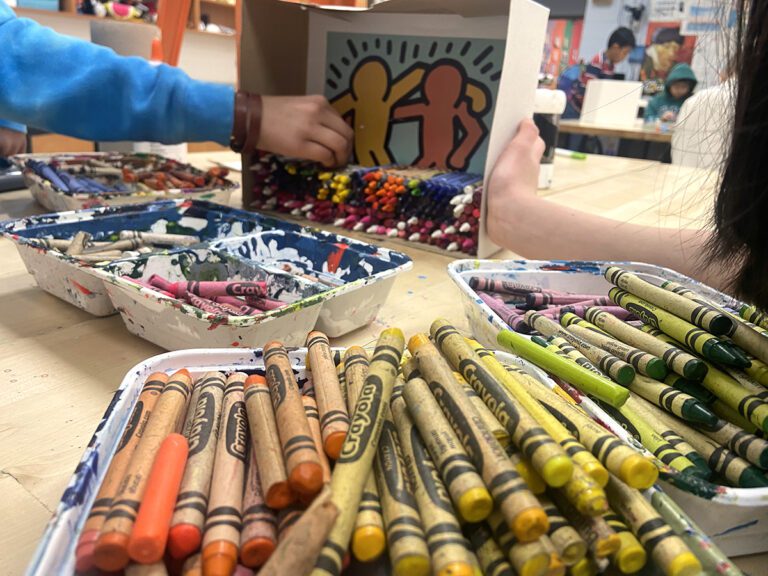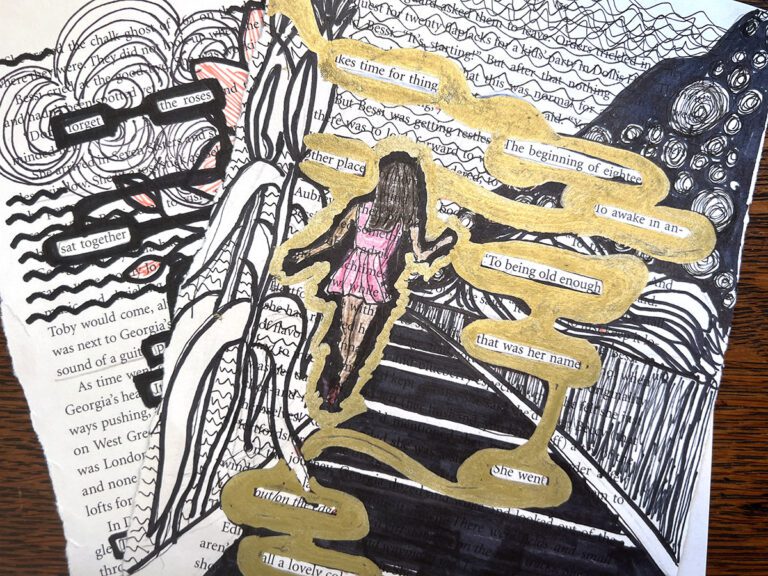Writing is often difficult for students and art teachers alike. Whether we are writing art history essays, formally addressing static issues in a critique, or doing multiple drafts of an artist statement, there can be a lot of stress involved with high-leverage writing. I have found that those important styles of writing become a lot easier if students are used to frequent, simpler, and easier writing assignments.
Not every writing activity needs to be formal or of great importance. In fact, they don’t even need to be graded.
Oftentimes, just letting students speak their opinion and develop their voice is enough if they know they are going to be heard.
There are a number of different ways for you to incorporate writing into your curriculum that are almost stress-free for both you and your students. Here are my three favorite writing activities that are simple, worthwhile, and easy to implement. Hopefully, they will also be enjoyable enough that you won’t have to see this face when you say, “We’re going to be doing some writing.”

1. Writing to Describe Sketches, Plans, and Ideas
The first thing I like to do is have kids write a bit about the sketches they make when we’re planning projects. I have them write just a couple of sentences.
You can ask a few simple questions to get your students thinking like:
- What makes the sketch unique?
- What makes it special?
- Where did you get the idea?
- Why does it appeal to you?
- What makes you want to do this for a project?
- Is there anything that you’re missing?
All of those questions serve to make students think about what they’re doing and to make their sketches meaningful. They need to think a little deeper about what they’re doing, and the writing is the vehicle to help them do that. It doesn’t need to be elaborate, and it doesn’t need to be formal. I’m just looking for their idea and why it appeals to them. This can be a catalyst for a conversation between the teacher and the student that gives both a better idea of the direction of the project.
2. Writing for Critiques and Reflections

I also like to do some simple writing with critiques. Not every critique needs to be formal; we don’t always need to describe, analyze, interpret, and judge what we’re seeing. Sometimes it’s enough to write down your thoughts, your first reaction, or connections you might be drawing between your work and your life or the artwork and your own experiences.
Students might write a letter to the artist describing why they like the work. Or, they might rank artworks from best to worst in order of color scheme. Sometimes I have students write about their favorite subject matter amongst everything that’s hanging on the wall or decide which of their classmates’ work belongs in a gallery. We even do simple sticky note critiques to give compliments.
All of these ideas are easy and quick. Most importantly, though, the thinking and writing skills they develop help get students ready for more formal writing assignments.
3. Writing to Analyze and Talk About Art History
Art history writing usually brings a lot of groans from my students. It doesn’t have to be that way, however. The biggest key to developing student interest is to find good artists–usually contemporary, but at least interesting enough to get kids involved and wanting to share their opinions. I always like to start art history by showing work from an artist and having my kids write down their first reaction. I have them write down the first thought pops into their head.

From there, we can discuss different works and share opinions. There are no right or wrong answers. I just want kids to share how they’re thinking about what they’re seeing. It might be as simple as writing down whether they like the work and why or why not. Or, we might go a bit deeper with something like the writing prompt below. Even these simple assignments help develop ideas and writing voice.

All of these writing activities help students begin to develop the skill of getting the thoughts in their heads down on paper. It is an incredibly valuable skill, not only when it comes to formal writing they will see down the road, but for all forms of artmaking as well. Any type of practice in this area is worthwhile, and even stress-free writing activities such as these help develop the traits we want to see in our writers, our thinkers, and most importantly, our artists.
What are your favorite writing activities to do with your students?
What are your best suggestions to help students develop their writing voice?
Magazine articles and podcasts are opinions of professional education contributors and do not necessarily represent the position of the Art of Education University (AOEU) or its academic offerings. Contributors use terms in the way they are most often talked about in the scope of their educational experiences.





